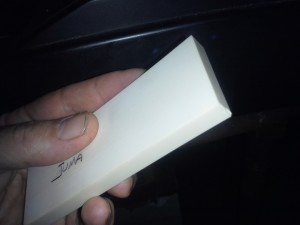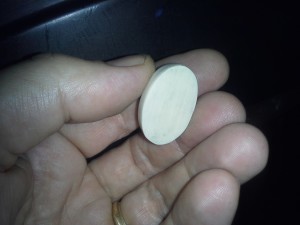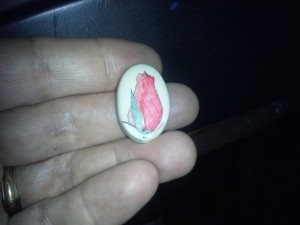
What is Juma?
Juma consists of a mixture of different mineral based materials in a resin component. Unlike casein juma can be thermoformed using boiling water (according to Atlas Billiard supply. Haven’t tried it yet myself).
Where does it come from?
Sources include Atlas Billiard Supply (cuestik.com) and suppliers in Europe (cuestik.eu)

How well does it cut?
Juma is a different chemical makeup – it tends to cut similar to casein though it’s chip size is similar to Corian. Juma also does not have any distinct odor when it’s sanded, unlike Casein (which smells like bone) or Corian (which smells like acrylic). According to Atlas Billiard Supply, Juma is also FDA approved and can be used for smoking pipes and kitchen utensils.

How well does it scrim?
Juma stipples well, cratering only slightly when stippled deeply, unlike polyester. It scribes well with a sharp tool, dusting on a long line rather than curling like ivory. Appears to be only slightly softer than ivory.
How well does it stain?
When polished, India ink and oil paint wipe off easily. If unpolished or only sanded to 400 grit the crevices will hold your pigment and make it look cloudy. Scribed and stippled lines come out crisp and well defined if the pigment is allowed to dry. Colored India inks hold well also.
Originally posted in the Scrimshaw.com Newsletter on June 14, 2015. For the latest information, tips and templates, subscribe to the newsletter – it’s low-carb, no spam, and you don’t need dramamine!
